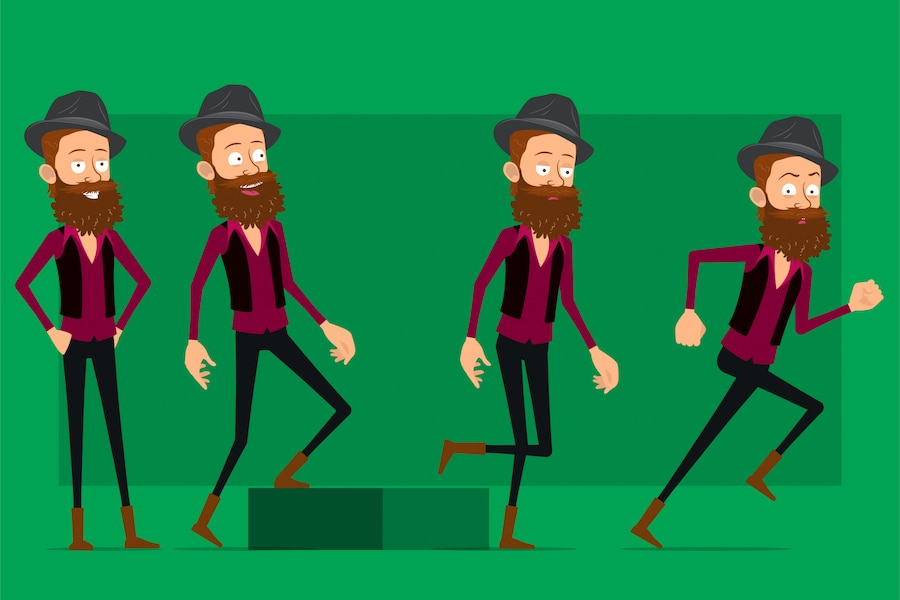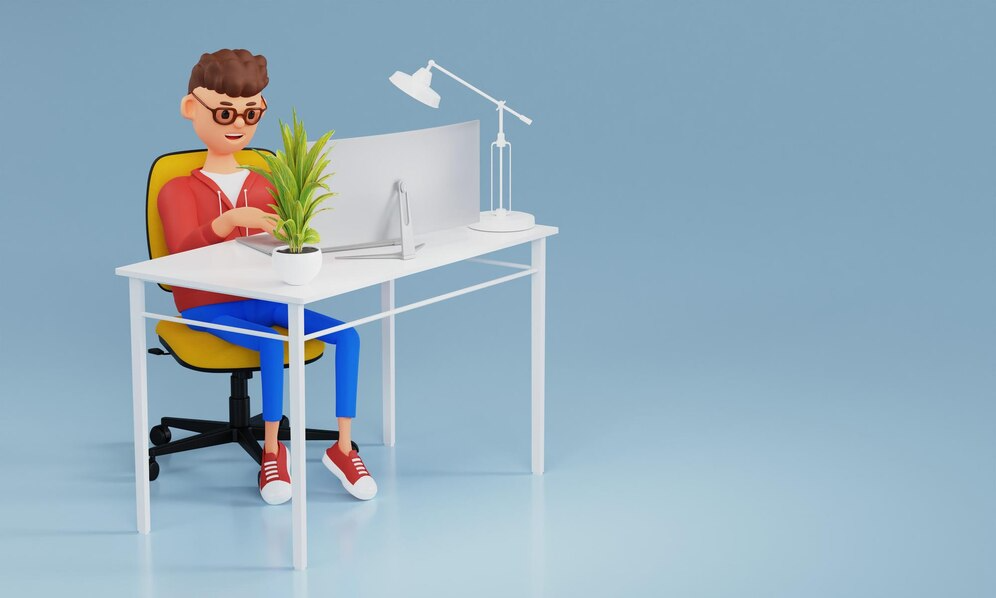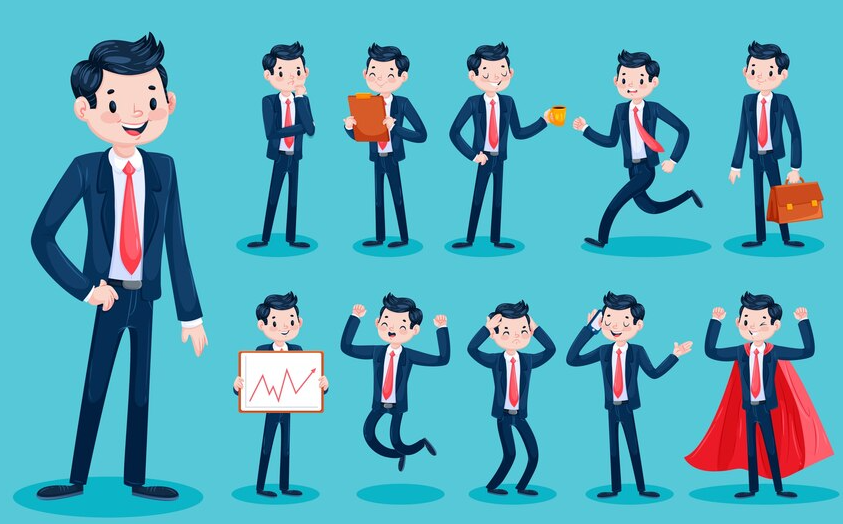Ever wonder how animators can make 3D characters move and emote so realistically? The secret is in the rigging. What is rigging animation? One of the most crucial processes in making a 3D model come to life as an animator is rigging. Without a well-designed rig, your character won’t have any movement or emotional expression; they’ll just be a static mesh.
Rigging is the process of creating a digital skeleton and control system for a 3D model. It allows an animator to pose and manipulate the model by adjusting the rig controls. The rig stores the character’s range of animated motion graphics services and deformations, enabling smooth transitions between poses.
What is meant by rigging in animation? For animators, rigging is an art form in itself. A good rig can make animation faster, easier, and capable of achieving higher quality, emotion, and realism. The next time you watch a Pixar film or play the latest blockbuster video game, take a moment to appreciate the rigging mastery behind all that visual splendor.
What is Rigging in 3D Animation?
What is rigging in 3D animation? In 3D animation, rigging refers to creating a skeletal structure with controls that animators can use to pose and animate characters and objects.
What Does a Rig Do?
A rig gives animators more flexibility and control over a 3D model. It acts like a digital puppet, with controllers (like joints) that can be manipulated to create poses and motion. Animators can grab onto these controllers to bend limbs, twist torsos, and make the character move in a lifelike way.
What are The Two Types Of Rigging?
In 3D animation, there are two main types of rigging: skeletal rigging and facial rigging.
Skeletal Rigging
Skeletal rigging, also known as bone rigging, uses a virtual skeleton to control the model. This skeleton mimics a human skeleton, with bones connected at joints. The animator can then manipulate the skeleton to get the model to move realistically. This type of rigging allows for complex movements and is commonly used for animating characters and creatures.
The process of building a skeletal rig involves:
- Defining the joints (hips, knees, elbows, etc.)
- Linking the polygons of the model’s mesh to the appropriate bones
- Adding controls that animators can manipulate to pose the model
- Ensuring the model deforms properly as the joints bend and rotate
Skeletal rigging provides a lot of control and flexibility but can be time-consuming to set up. Once built, though, the same rig can often be reused across multiple characters.
Facial Rigging
Facial rigging focuses on controlling the face, allowing animators to create emotional expressions and lip-sync characters to speech. Facial rigs give animators control over:
- Eyebrows
- Eyes
- Cheeks
- Jaw
- Lips
Facial rigging uses morph targets, blend shapes, and some skeletal rigging for the jaw and eyes. It allows for subtle expressions and lip-syncing, which are crucial for believable character animation. Creating a robust facial rig requires patience and a keen eye for the nuances of human emotion and facial movements.
In the end, both skeletal and facial rigging are essential for animating digital characters and bringing them to life. Mastering the art of rigging allows animators to make their characters as emotionally complex and physically dynamic as needed for any animation project.

What is The Difference Between Animation and Rigging?
Animation and rigging are two separate parts of the 3D animation process, though they work together. Animation focuses on creating the actual movements, while rigging sets up an armature of joints and bones so characters and objects can be posed and animated.
What Rigging Involves
Rigging is the process of building a skeleton structure and control system for a 3D model. This skeleton allows the 3D model to move realistically. The rigging artist creates joints, called “bones,” that connect the parts of the model. These joints act like a real skeleton, allowing the arms, legs, head, and other parts to bend and move.
The rigging artist then adds controls, like handles or sliders, that the animator can grab and move to pose and animate the model. A good rig should be intuitive for animators to use and allow a full range of motion. Rigging requires both technical and artistic skills to create a rig that is both functional and helps achieve the desired look and style of animation.
How Animation Uses Rigging
Once a model is rigged, animators can bring it to life! They use the controls created by the rigger to move the limbs and body of the model into different poses, like a puppeteer controlling a marionette. By changing these poses over time, animators create movement and action. They determine things like walk cycles, facial expressions, and hand gestures to give the animation a sense of character and personality.
Rigging provides the foundation and framework for animation. Without a well-constructed rig, animators would not have the control and flexibility they need to create compelling motion and performances. While animation and rigging have distinct roles, they work together to breathe life into 3D characters and objects. Understanding their differences—and partnership—is key to appreciating the craft of 3D animation.
Why is Rigging Important in Animation?
Rigging is a crucial step in 3D animation that gives your characters life.
Why is rigging so important? For starters, it allows your characters to move realistically. Rigging involves creating a digital skeleton and control system inside your 3D model. This skeleton lets you pose and animate your character by moving their limbs and joints, just like a real person.
Without rigging, 3D models would be static and stiff. Rigging allows animators to breathe life into characters and objects, enabling them to walk, talk, jump, or fly realistically. It provides the underlying structure and musculature that make 3D animation possible.
Rigging is essential for creating characters that emote and connect with audiences. A well-designed rig gives animators intuitive controls to craft fluid, expressive motion and performance. Whether you want to make a virtual creature leap and bound or enact a subtle facial expression, rigging is what makes 3D rigging models move dynamically on screen.
Rigging also gives your characters facial expressions. By rigging a character’s face, eyes, mouth, and eyebrows, you can make them smile, frown, look surprised, and convey other emotions. This helps bring your characters to life and allows them to visually connect with audiences.
A good rig also saves animators time. Once a character is properly rigged, animators can quickly pose and animate them without having to manually adjust each vertex and joint. This speed and ease of use let animators focus on the art of animation rather than technical character setup.
In the end, rigging is essential for creating believable 3D characters that move dynamically and expressively. While modeling defines a character’s appearance, rigging gives them mobility, emotion, and spirit. Your characters rely on their rigs to come alive on screen and tell their stories. Without rigging, 3D animation would lack the heart, soul, and human qualities that make it compelling.
Rigging For Realistic and Appealing Character Movements
Rigging is key to creating realistic and compelling character animation. Rigging refers to the process of creating a digital skeleton for a 3D model that allows an animator to pose and move the character. Think of it like the strings that control a marionette.

Flexibility and Range Of Motion
A good rig gives a character a full range of motion that mimics human and animal movement. It should bend, twist, and stretch smoothly without distortions or breaks in the mesh. The rig also needs enough flexibility to achieve exaggerated poses for more cartoony styles.
Control
A character’s every movement, from an eyeblink to the curl of a pinky finger, must be animated with extreme precision. Making even the tiniest adjustments is simple with a rig equipped with simple controls like sliders and dials. Options for automation, like pre-built walk cycles, can also speed up the animation process.
Appealing Deformation
As a character moves, its mesh changes shape. A well-designed rig results in appealing deformations that mimic the squash, stretch, and twist of muscles under the skin. Smooth, organic deformations are especially important for characters that lack surface details like fur, scales, or clothing. Without an appealing deformation, movement can appear unnatural and off-putting.
Rigging is an art form in itself. Mastering it takes an understanding of human and animal anatomy, animation principles, modeling, and technical skills. But for animators, a good rig is the foundation for breathing life into digital characters and crafting moving stories and experiences. With the right rig, you have the power to make any character dance.
Rigging Tools and Techniques Used by Animators
Animators use various tools and techniques to rig 3D characters and objects. Rigging essentially means creating a digital skeleton with controls that can be manipulated to create movement.
Joints and Bones
The building blocks of any rig are joints and bones. Joints act as pivots that connect bones and allow rotation. By linking joints and bones together, animators can create a character’s skeleton and structure. The location and number of joints depend on the level of detail and control needed. More joints mean more flexibility, but also more complexity.
Controllers
Controllers are the handles animators grab onto and manipulate to pose and animate a rig. They are attached to joints and bones and come in many forms, from spheres and cubes to custom shapes. Controllers provide an easy way for animators to select and move parts of a rig without having to manipulate individual joints and bones.
Constraints and IK
Constraints and inverse kinematics (IK) are used to control how a rig moves. Constraints lock certain parts of a rig together so they move as a unit. IK is a tool that lets animators control a chain of joints by manipulating only one joint. For example, an animator can bend an entire arm by rotating just the wrist joint. IK simplifies the animation process and creates more natural movement.
Layers and Overrides
Many rigs use layers and overrides to provide more control options. Layers allow animators to pose a character on separate levels that can be blended. Overrides are mechanisms that let animators disconnect parts of a rig from the main controls and manipulate them independently. These tools add flexibility and help animators achieve complex poses and motion.
The techniques and tools animators use to rig 3D characters and objects ultimately provide the control and flexibility needed to bring digital creations to life through animation. With practice and patience, animators can master the art of rigging.
Maya, 3DS Max, Blender, and Cinema 4D’s animation and rigging processes are as follows:
Most of the rigs used in these programs do the same tasks and follow the same procedures.
They all tend to have a similar appearance and use control rig systems to animate characters. After developing the original skeletal system, riggers use the skinning procedure to “bind” the character mesh to the rig’s bones. To prevent “breaking” or unexpected deformations in the character mesh, a 3D artist will start to adjust specific parts of the control rig after adding it. Because IK solvers have different implementations, rigs are not cross-program compatible.
Keyframe animation: Keyframe animation software needs each character’s bones’ key positions to be manually defined. This kind of animation is the most prevalent.
Motion capture animation: Retargeting mocap data onto a rig allows for motion capture animation. Usually, a plugin (here’s a free one) is used to accomplish the retargeting process. The motion capture animation process is covered in several online tutorials.

The Future of Rigging in 3D Animation
What is a rig in the animation future? The future of rigging in 3D animation looks very promising. As technology and software improve, rigging techniques are becoming more advanced and accessible.
Automated Rigging
In the coming years, automated rigging systems will make the process faster and easier. Using machine learning, AI can analyze a 3D model and automatically generate a custom rig setup. Animators will be able to make minor adjustments, but the bulk of the work will be done for them. This will allow smaller studios and independent animators to create professional rigs without needing an expert rigger on staff.
Adaptive Rigging
Adaptive or “smart” rigs are starting to emerge that can automatically adjust to changes in a character’s shape or proportions. If an animator scales, stretches, or modifies the mesh, the rig will adapt to continue fitting the new form. This makes it much easier to create cartoonish animations where characters regularly distort their shapes.
Virtual Reality
As virtual reality becomes more widespread, new tools are being developed for animating and rigging in a VR environment. Rather than manipulating rig controls on a 2D animation screen, animators will be able to grab, push, pull, and move parts of a character’s rig directly with their hands while wearing VR gloves and goggles. With this immersive method, it is possible to have more intuitive control and a clearer understanding of the character’s movement in 3D space.
In a short period of time, rigging has advanced significantly, and the 3D animation service as a whole is growing quickly. While the fundamentals of rigging likely won’t change too dramatically, technological improvements will continue to make the process more automated, adaptive, and virtual. The future of animation and rigging looks bright, opening up more creative possibilities for animators and allowing smaller studios to produce high-quality work.
Related Article: Types Of Animations
Conclusion
Without a properly rigged character, your animation project would be nearly impossible. What is animation rigging, the technique that gives your figures life and enables them to move naturally and realistically? Character rigging in animation is an involved process that takes a lot of talent and patience, but the end product is what makes character rigging in animation so captivating.
Consider how much effort was put into rigging and animating the characters the next time you watch an animated film or play a computer game featuring 3D characters.



